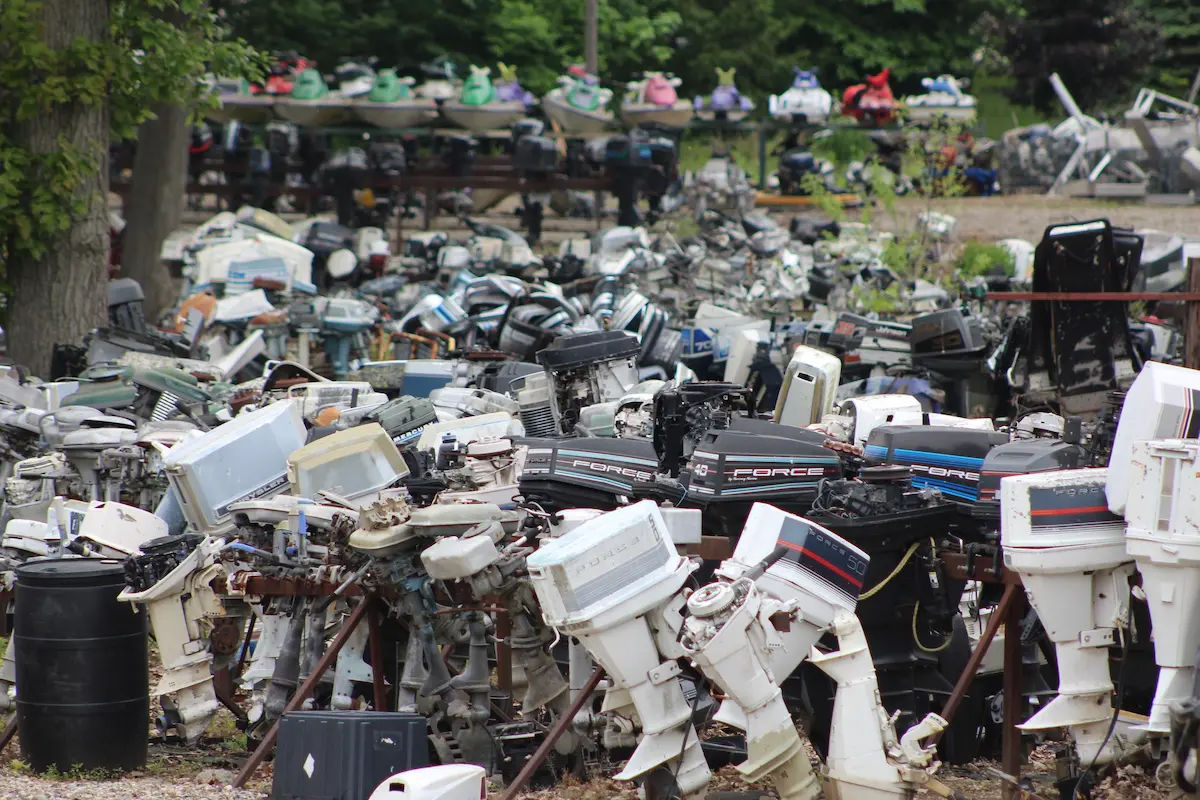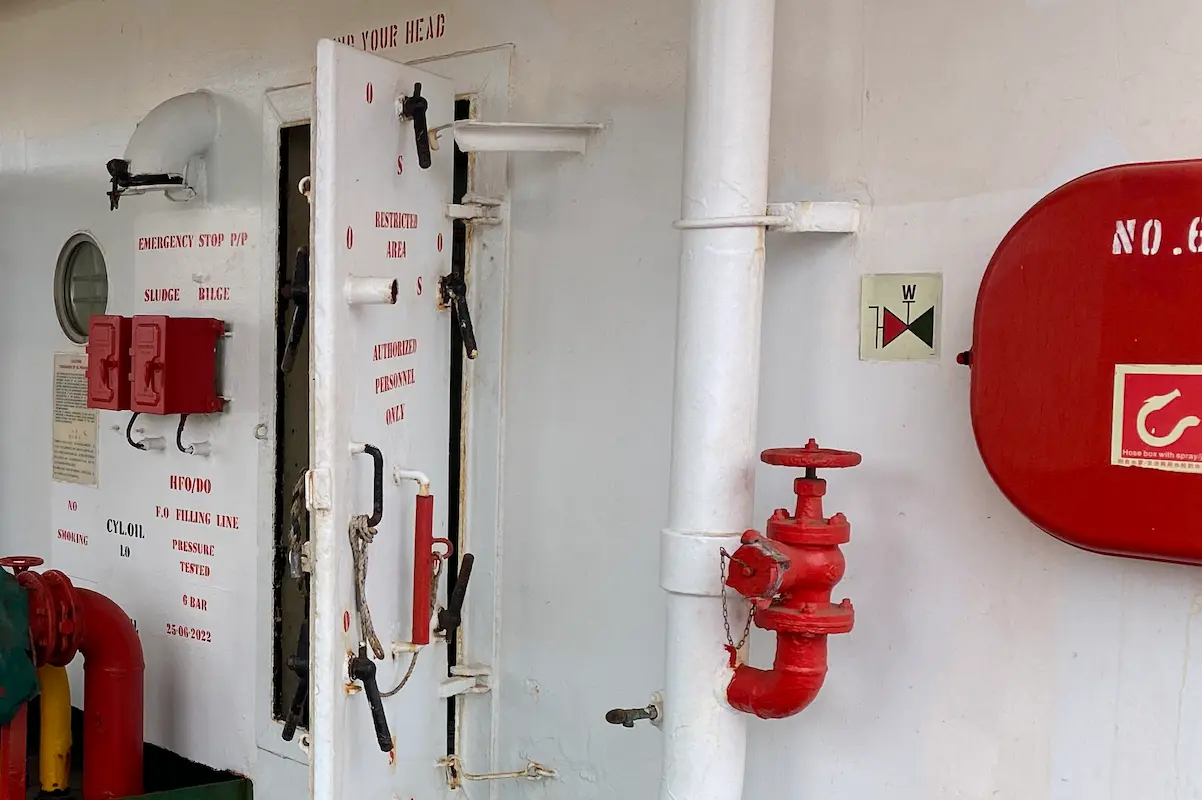What is the best way to get started boating? Assume for a moment that you are interested in hiring a boat and have successfully finished boating school. But do not, on the other hand, learn the required abilities to feel confident and competent when on the water.

I’ve been in your shoes; you’re scared and have concerns about your ability to manage your boat. I understand. You are in desperate need of some last-minute tips to help you feel more at ease behind the wheel of the boat.
Relax! It is, after all, the purpose of boating to have a wonderful time while relaxing and unwinding. Additionally, as the captain of your boat, you do not want to dampen the spirits of those who have gathered to enjoy your special day with you and your guests.
Running a boat differs from operating a car, yet the process is not too difficult. Simply keep an eye on the different indicators (get familiar with your gauges), such as oil pressure, engine speed, and engine temperature, and act accordingly.
Before starting the engine, be sure that there is enough airflow to do so. All you have to do is switch on your ventilation blowers for just a few minutes before the main engine is started to avoid any unpleasant surprises.
This is a preventative strategy that is intended to prevent an inadvertent fire or explosion from occurring.
Simply check the weather forecast before you set out on your journey. When you’re a newbie boat driver, the last thing you want is to be in the middle of a stormy sea.
Your first and most important concern should be safety.
What Is the Minimum Age To Operate A Boat In The United States
Depending on the state, different minimum boating age regulations apply. For example, the minimum age to operate a boat in Arizona is 12, but the minimum age to operate a boat in Texas and New York is 16 and 18, respectively.
In a similar vein, there is no minimum age barrier for boating in 12 states in the United States. This group includes the states of Alaska, Ohio, Hawaii, Virginia, Idaho, Florida, Nevada, Louisiana, Illinois, Missouri, Michigan, and North and South Carolina, as well as the District of Columbia.
Depending on the state, such as New York or Oklahoma, the minimum age to operate a boat is as young as 12, but anybody under the age of 18 must-have special certifications. However, anybody above the age of 18 can drive a boat without the need for a permit.
Except for four states: California, New Mexico, Oklahoma, and Utah, there is no upper age restriction for operating non-powered watercraft in the United States.
While California has certain requirements for a boater education course, it is the state with the most liberal standards. 22 states in the United States require you to provide authentic evidence of completion of a boater education course; however, the state of California does not require this.
Just a handful of the states that have ratified the agreement include Alabama, West Virginia, Tennessee, Florida, Hawaiian Islands, the District of Columbia, Ohio, Pennsylvania, New Mexico, Wisconsin, Nevada, and Arkansas.
Similarly, not all states require boat operators to have the appropriate license to operate their vessels. They are required in Alabama, New Hampshire, Delaware, American Samoa, the District of Columbia, Puerto Rico, Louisiana, and Vermont, among other states.
Take Into Consideration The Following Safety Concerns

Driving a boat is in no way the same as operating a motor vehicle. For example, a boat must be able to cut through the water to proceed. The displacement of water away from the boat’s bow happens as a consequence of the operation of this operation.
While boating accidents are quite rare, only happening from time to time during the year, it is advisable to be prepared and to take into consideration all possible safety precautions.
This includes completing a pre-departure checklist, being cognizant of water conditions, complying with US navigation requirements, avoiding overloading, and seeking a free US Coast Guard vessel safety assessment before departing on your voyage.
In addition to having a separate life jacket for each person (13 and above), having safety gear, preparing a float plan, and not driving while intoxicated, there are other important safety standards to adhere to.
When you leave your boat with someone onshore, they will be able to contact appropriate authorities in the event of an emergency.
A float plan is a collection of vital information about the crew, duration, boat, intended route, communication channel, safety equipment, name, team leader, and address that you leave with them.
According to the law, a boat must be equipped with an acceptable number of life jackets for each person on board. In addition, in many places, children under the age of 13 are required to wear a life jacket at all times.
It is estimated that wearing a life jacket may save around 80% of fatalities, according to the United States Coast Guard. Modern life jackets are lightweight, easy to put on and take off, and surprisingly pleasant to wear. This means that humorous excuses will no longer be necessary.
Recommendations For Personal Protective Equipment
Any essential safety equipment must be carried while operating a boat, and this responsibility falls on you. The worst part about dealing with an emergency is that you never know when it may strike.
Or maybe it occurred on your first day of sailing and you had no prior experience with an emergency on the water. The need for emergency safety equipment on board is thus critical in the event of a disaster on the water.
The following is a comprehensive list of all of the safety equipment you will need for your boat:
- Keep a heavy-duty flashlight as well as extra batteries on board your boat at all times. This will aid you in seeing in the dark, and sending signals in the event of an emergency, such as running out of fuel in the water.
- Personal First Aid Kit: Having a sufficient first aid kit on hand is crucial for personal safety in the event of an accident or other emergency. It is also important to make certain that everyone on board is knowledgeable about how the first aid kits onboard are used.
- On a boat, you never know when you’ll need to repair or when anything will break. Having a good tool kit on hand during an emergency may aid in ensuring that any breakdown is repaired as quickly as possible.
- Throwable Flotation Device: In the event of a man overboard situation, you must act fast and intelligently. Having a throwable flotation device on hand may therefore be used to save a life in an emergency.
- The United States Coast Guard mandates that a sufficient number of life jackets be kept on board. Each person is required to have a minimum of one life jacket on them at all times. Aside from that, it mandates that children under the age of 13 wear a life jacket at all times on the water.
- Signaling Devices: If you become stranded at sea, signaling devices such as flares, mirrors, SOS beacons, radar reflectors, and water whistles can greatly assist in facilitating a swift rescue.
- Ascertain that you have a fully prepared flare kit (you can get one on Amazon!) in case you need to alert the coast guard or maritime authorities.
- In both normal and emergencies, a whistle is a helpful tool for alerting the presence of someone or something. If you’re dealing with heavy fog or really low visibility, this may be quite helpful.
- Having a fire extinguisher on hand is important. Just because you are surrounded by water does not mean you are fully safe from fire dangers.
- Because a boat is incapable of being pushed by water or air, it needs fuel and is equipped with electrical circuits that are susceptible to fire. A fire extinguisher should be carried on board, and you should be acquainted with its use.
- When it comes to boating, ropes are crucial since they are used for a range of tasks, such as rescuing someone who has fallen overboard.
- The use of a knife or other cutting device in the event of being separated from your group and stranded in the water will be quite beneficial.
- The MAYDAY distress signal, which is sent using a VHF maritime radio in an emergency, may be used to seek help, get a speedy response, and broadcast a distress signal in an emergency.
The Steering And Sailing Regulations Of The United States Coast Guard
The United States Coast Guard’s navigation laws for steering a ship or boat include provisions for vessel conduct in normal circumstances, vessel behavior with other vessels, and vessel behavior when visibility is limited or nonexistent.
These rules and regulations apply to all vessels that operate inside the territorial seas of the United States of America. Water, lakes, and the sea are all included in the special economic zone’s boundaries.
A vessel must maintain a constant watchful lookout for any other vessels that may be in the vicinity. In addition, all boats must maintain a safe speed and avoid exceeding it at all times.
The quantity of traffic, visibility, maneuverability, and weather conditions are all factors that might influence this decision.
The pilot or captain of your vessel is responsible for maintaining a safe distance between your vessel and other vessels that are not under your command, fishing vessels, or vessels with limited mobility.
To avoid an accident, it is your job to continually assess the threat and take necessary action to avoid it. When cruising through a heavily populated area, extreme care should be used to avoid colliding with any other boats or vehicles.
Even while passing other boats under normal conditions, keep a safe gap between them. The same is true if you see a vehicle arriving from behind you and must yield to allow the vessel to pass.
When operating a boat in or near areas where visibility is restricted, take extra precautions to avoid colliding with another vessel head-on or on the side. In low visibility, it is recommended that you proceed gently.
Additionally, one should be prepared to take drastic measures in the event of an emergency. Aside from that, all power-driven boats should have their navigation lights on, including those on the back, sides, masthead/forward, and bow.
A Simple Rule To Prevent Your Boat From Being Overloaded

Generally, a boat is capable of transporting the maximum amount of weight for which it was designed.
A limit on the number of goods that may be transported by each boat is established. Not that you can’t load your vessel beyond a certain point, but loading your vessel beyond that point just makes your vessel unsteady.
Loading responsibly is mandated by federal law in the United States of America. Getting on the water is all about relaxing and socializing with friends and family. Other recreational activities include fishing, day sailing, water sports, and spending time with friends and family.
If you make a major financial investment in the purchase or rental of a boat, accidents are something you want to avoid at all costs. As a result, as you prepare to go on your first boat expedition as captain, consider the following:
Keep the boating environment safe, and prevent overloading your vessel, as you will be held liable.
Reference to your boat’s capacity plate is the most accurate method of determining its maximum capacity for passengers and weight. This plate may be found on the outside of the boat.
These plates are fixed at the helm of almost every boat, notably in the United States, where such plates are needed for small and medium-sized vessels.
It contains critical information about your boats, such as the model number, batch number, serial number, capacity, top speed, horsepower, maximum weight limit, and passenger capacity. It also contains important information about your boat’s engines.
This information may also be found in the owner’s manual for the boat you are using. If you own a large vessel or want to go outside of the United States, this is a significant benefit. Additionally, some manufacturers provide a supplemental safety manual with their goods.
A Safety Check Before Departure
Before putting your boat’s navigation plan into action, you need to do one more safety check. This includes keeping track of the quantity of gasoline oil in your tank, refilling it as needed, and checking the charge of your batteries to ensure they are fully charged.
Ensure that all passengers are secure aboard the boat; inform them of any possible hazards and the day’s route; practice propeller safety; have all necessary boat certifications on board, and vent outgasses if necessary.
No one should be allowed to board your boat while it is in operation. Similarly, if you are swimming near the propeller or if you are in a man overboard situation, you should bring the propeller to a complete stop.
You should not operate a boat unless you have thoroughly reviewed and approved it. Start the engine and allow it to idle for around 1-2 minutes after everyone has boarded the vessel.
In the meanwhile, double-check that everything is within the working/regular parameter range of the system. Check to ensure that the exhaust does not release any objectionable aromas of smoke before continuing. When you’re finished, get ready to leave the bunk.
Get A Boat Out Of Its Berth

Boats can be driven on open water and then docked or removed from a berth, marina, or pontoon with relative ease. I’ve seen people have difficulty getting into and out of their berths, regardless of their confidence or physical ability.
When leaving a berth, the suitable technique is decided by the direction of the wind, the position of the boat, and the speed of the current. Check to ensure that your boat’s fenders are securely fastened to prevent scratches or damage to the boat.
If the wind is blowing away from the dock, just untangle all of the lines and let go.
As the boat drifts away from the platform and creates a safe gap between itself and the platform, start the engine and choose either positive reverse or forward drive, depending on where you are traveling.
My own and others’ experiences have taught me that it is considerably more difficult to regress than to progress in any direction at any given time.
This happens as a consequence of the bow’s greater impact on the wind than the stern’s influence does. You will be exposed to the platform edge if you continue ahead in your blindness. The bow of the boat will spin as you approach.
When there is no wind, the condition automatically changes into reverse and gently guides the boat away from the pier, marina, or pontoon where it is now anchored. Maintain a safe gap between the dock and your boat by balancing (straightening out) your boat and continuing.
The fender may absorb part of the pressure, enabling you to drive the boat with more confidence. Release all lines except for one in the stern, then pull the slack as you reverse the direction of the boat.
With a gentle reverse, your stern will be driven against the dock, while your bow will withdraw into the water. After about 45 degrees of rotation, release the stern rope and continue with the process of rotation.
Some Things To Keep In Mind While Driving Across The Water
It is now necessary to leave the port when the boat has been properly removed from its dock. Allowing for as little speed as feasible, depart with caution, keeping an eye out for obvious forward and sideways movement.
Once the boat is out on the wide seas, it’s time to increase the boat’s speed by half-pressing the throttle on the console. With increasing velocity, you’ll see that the bow starts to rise at an angle.
Reduce the throttle gradually and evenly to zero while simultaneously reducing the trim until the boat stabilizes on the plane. This is how I do things, but you are free to abandon it if you so choose.
You may next do some basic maneuvers to test how the boat behaves when it is turned after you have attained the desired speed. Do not do anything flamboyant; instead, start with very few motions and gradually increase your speed as your confidence and control grows.
The responsiveness of your boat at different speeds may be determined in this way. Never try to make a hard turn at high speed. If possible, instead of doing so, just slow down to a safe limit and then turn; this speed should be around 20 to 25 percent lower than the peak speed.
Keep in mind that you must adhere to all relevant federal, state, and local navigation restrictions.
Never try to pass someone on a busy river or in an area with a large concentration of people. Before turning your boat, check to see that the way is clear. In this sense, driving a boat can be quite similar to driving a car. Always remain aware of your surroundings, and remain fully in control of your vessel.
Avoid going at peak speed or trimming too low while sailing in shallow water. Additionally, one should always maintain a distance of at least 100 feet from the coastline. Finally, take it easy and enjoy yourself, but never lose sight of your alertness.
What Is the Best Way To Operate A Boat In Severe Weather?
Ideally, if you’re a beginner, you won’t be out in the water in bad weather at all, but when the going gets tough, and you get caught out by the elements, you’ll have to navigate through some choppy waters.
This is not an ideal situation, and extreme care should be used before returning to the port of entry.
As a result, it is advisable to be informed of all of the safety precautions that should be taken while sailing over large waves. This is under a variety of wind conditions ranging from moderate to severe. Only a large ship, such as a supertanker, is completely risk-free beyond that.
Maintain a regular habit of checking the National Weather Service in the United States to be aware of possible warnings and wind speeds, if applicable. If it is possible, invest in a barometer and learn how to use it effectively to forecast weather changes.
When out on the lake, be sure to return to the pier before a storm or rain arrives. Calculate the position of clouds, the direction of the wind, and the velocity of the wind using the information provided. This will aid you in identifying whether or not a storm is approaching.
Finally, pay attention to the thunder to assess how close the storm is to your location. It is suggested that any slack lines be secured, that you wear a life jacket, and that you listen for the VHF distress signal.
Slowing down is the most prudent course of action while sailing in adverse weather conditions. Slowing down your boat enhances its stability and gives you more time to react to the situation. It is preferable to ride the wave rather than fight it as a second-best line of action.
Yes, by riding the wave rather than attempting a head-on collision, you will not only gain speed but will also avoid capsizing completely.
Approach waves at an angle and in a zigzag pattern for the best effects. If at all possible, avoid allowing the waves to hit you side on, as this is the quickest way to lose stability in choppy water, increasing the chances of capsizing.
What Measures Can You Take To Avoid Colliding With Another Boat?
A collision with another vessel is almost always the last thing anybody wants to happen to them. When either you or the other vessel’s pilot breaks a nautical regulation, you and the other vessel are in danger of colliding.
A collision might be minor, resulting in little loss or damage, or it can be catastrophic, resulting in death or major damage to the vessel. A collision can occur at any point throughout the voyage.
Many people believe that avoiding collisions is a common-sense precaution or that it is an obvious question during a boat assessment exam. Educating the pilot/captain on how to manage a crisis and take proper action, on the other hand, is essential.
Final Thoughts
What are your first recollections of driving a car? You, too, could have been fearful at the moment. However, you most likely recovered quickly and driving became second nature to you before you knew it.
You’re very certainly going to have a similar experience learning to operate your boat. You’ll be a bit wobbly at first, but it won’t be long before you feel natural and safe at the helm of yours or a rented vessel.
Consider that each boat is unique, and learning to drive any boat takes time and experience—even Captain Ahab would have to relearn a few things while taking the helm of a new vessel.
As inevitable consequences of the learning process, do not be shocked if you encounter a few bumps along the way as you learn to control your boat. This is all part of the process. The more mistakes you make early on, the quicker you’ll learn, and the faster you’ll become a boating master!
- 11 Boat Salvage Yards in Texas – January 18, 2025
- 7 Boat Salvage Yards in Michigan – January 15, 2025
- Fire Hose SOLAS Requirements, Regulation 10: Ensuring Maritime Safety – January 9, 2025





Leave a Reply